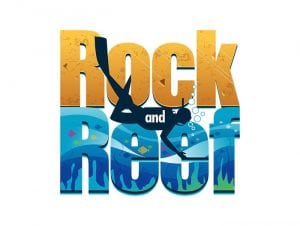Above all, a logo for the leisure industry needs to show fun and good times to brand easy. Few people have the amount of leisure time they want – and that means they guard their leisure time carefully. If a company in the leisure industry wants to capture their target audience’s attention, they must develop a brand that is compelling, unique, and recognizable. And then, they must use it to convince people that their company is worthy of their free time.
Logo Concerns for the Leisure Industry
The first thing to consider when branding a leisure company is the logo you choose. Your leisure logo is the very first thing most people will see when they search for ways to spend their free evening, weekend, or vacation time. If you want them to move ahead and learn more about your company, your logo must be intriguing and representative of your company.
How to Combine Confidence, Excitement, and Fun in Your Logo For The Leisure Industry
Choosing the right logo for the leisure industry is a challenge. The image and typography you select must let people know about your brand at a glance. It’s helpful to know what emotions people want to feel when they seek out leisure options.
1. Confidence comes first. Why is it important? Because people want to know that leisure companies can provide them with the entertainment or relaxation they seek. Your logo can’t be tentative or confusing. It must clearly show people who you are and what you do – and inspire trust that you can deliver on your promises.
2. Excitement comes next. You want people to feel a sense of urgency and anticipation when they see your logo, even if all they’re anticipating is lying on a beach with a tropical drink and a book. Bright colors are a popular choice for companies in the leisure industry for that reason.
3. Finally, you want to convey fun. Leisure time should be fun, and imparting a sense of fun with your logo is important. You don’t want to go overboard, but it’s important to show people that they can expect to have a good time with you.
Popular colors in the leisure industry include red, blue, and purple, all of which can help to convey these traits.
Choosing the Right Icons and Typography
The next thing to consider is the icons and typography you use in your logo. Many leisure companies choose similar icons, so the key is to make sure that yours stands out from competitors. For example, it’s to be expected that many golf courses would incorporate images of golf clubs, flags, and golf balls into their logos. You can too – but you have to make yours unique.
Typography is very useful when it comes to getting your brand’s personality across. Many companies in the leisure industry choose bold, playful fonts that communicate the excitement they want their target audience to feel. Some even choose to blend icons and typography together to create unique logos.
Logo Leisure Industry Analysis
Now let’s look at a logo for the leisure industry we designed to see how these things might work in practice. Here’s a logo we designed for a leisure company that illustrates how icons and typography can work together:

As you can see, this logo uses textures, colors, and images with its typography to create a real sense of what the company does. The word “ROCK” is gold with a rock-like texture, and “REEF” provides viewers with a sneak peek into a colorful, underwater world. The snorkeler depicted bridges the gap between land and sea and perfectly illustrates what people can expect from this company.
How to Create a Memorable Leisure Brand
Now let’s talk about how to create a memorable leisure brand. The brand you create is particularly important because, in many cases, the people who seek out your company will be spending quite a bit of time with you. For example, people who sign up for a guided tour will have extensive contact with your employees. Your brand needs to let them know what to expect.
Evaluating the Competition
The first step is to evaluate your competition. Competitor research is important because you need to know what your competitors are saying and doing before you can determine the best way to entice the audience you both want to attract.
In some instances, you may be competing both with local companies and companies in other leisure spots. You’ll have to decide who your primary competition is and then choose your research terms accordingly.
It’s a good idea to make a list of who your competitors and what they offer. You should check out their websites, prices, reviews, and social media accounts to get a feeling for who they are.
Positioning Your Company in the Market
Next, you need to position yourself in the market. The owner of a mini-golf course might have 10 competitors in his area. The key is to find an angle to help attract customers away from the competition.

Here are some things that can help differentiate you from your competitors:
1. The services you offer
2. The prices you charge
3. The extras you include with your products or services
4. The spin you put on a familiar activity
For example, a mini-golf course with a liquor license might be able to use that to attract adult players. By contrast, a course that’s kid-friendly can draw families with young children, and a very difficult course might draw people who want a challenge.
Your Brand Voice and Personality
Finally, you need to determine the right personality and voice to use for your brand. These things matter because people want to like the leisure companies they patronize. Remember, they’re looking for fun and excitement.
Of course, one person’s idea of fun is another person’s idea of boredom, and that’s why you must give a great deal of thought to the audience you want to attract. A luxury cruise line, for example, might use a very different tone than a Disney cruise. One wants to attract wealthy older people and the other, families with children.

Unless you are aiming for a very high-end audience that expects a tone of exclusivity, you will probably want to adopt a casual and conversational tone. Whatever you choose, you should use a consistent tone on your website, printed marketing materials, and on social media.
Content Marketing Ideas for Leisure Companies
Content marketing is one of the best ways to connect with your target audience and show them that you can deliver on the promises of your brand and logo.
Blogging Ideas for The Leisure Industry
Blogging can help you to keep the content on your website fresh and relevant. Even two new blog posts per month is enough to engage your audience. Here are some ideas to consider:
1. Use your blog to highlight the features of your product or service.
2. Share ideas for other activities in your area to help entice people to visit your location.
3. Do a video blog or photo blog to demonstrate the entertainment you can provide.
If you have a blog, make sure to promote your posts to your email list and on social media.
YouTube and Other Video Marketing
The next thing to consider is video marketing. Videos are hugely popular and most consumers say that they would rather learn about a product or service from watching a video than from reading about it.
If you don’t already have a YouTube channel, now is a great time to set one up. You can do it for free by logging in with your Gmail account.
Once you have a channel, you can create explainer videos, demonstrations, and even videotape client testimonials. And if you want a way to connect with your target audience in real time, consider using Facebook Live Video as a way of doing that.
Branding for the leisure industry with User-Generated Content
User-generated content is an especially effective form of branding for the leisure industry because you can get your social media fans to create content for you. People love to share photographs of their leisure time and you can capitalize on that.
The simplest way to get user-generated content is to ask for it. If you post a photo of your facility, try ending it with a question. For example, you might ask, “When was your first time at our facility? Tell us in the comments and we might share your story!”
Contest Marketing
If you want to up the ante and get a ton of attention for your company, you might want to consider hosting a contest or giveaway. Contests are hugely popular. After all, we all love to win something free!
The prize you give away is up to you, but if you decide to ask for user-generated contest as a way for people to enter the contest, make sure that the prize is one that will appeal heavily to your target audience. Cash prizes can be problematic because everybody loves cash. You want to attract people who might visit you even if you didn’t have a contest going on.
You can use a contest to build your social media following, collect emails, or get user-generated content. If you decide to try it, make sure you have clear rules and a deadline, and that you award prizes promptly when the contest is over.
Conclusion
People want to have fun in their leisure time, but branding a leisure company is serious business. Following the suggestions here can help you build a strong brand for the leisure industry, stand out from the competition, and grow your company. See how New York City is doing.
